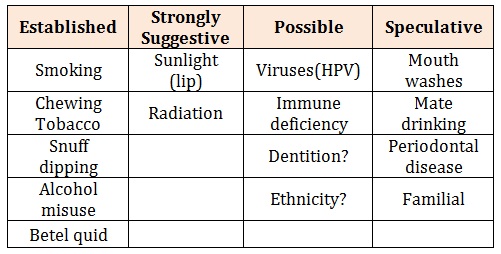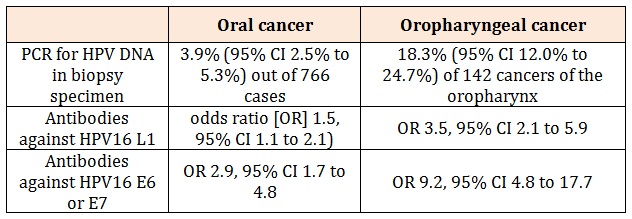
Citation: Medawela RMSHB and Ratnayake DRDL. Human Papilloma Virus: Emerging Risk Factor in Oral Squamous Cell Carcinoma among Asians. J Dental Sci 2017, 2(3): 000132.
*Corresponding author: Medawela RMSHB, Department of Oral Medicine and Periodontology, University of Peradeniya, Srilanka, Tel: 00 94 77 33 44 102; Email: sumuduhimesha@gmail.com
Oral and oro-pharyngeal cancer grouped together is the 6th most common cancer in the world. Annual estimated global incidence is around 300373 for oral cancer (GLOBOCAN 2012). South East Asia region (SEARO) accounting for 1/3rd of total incidence of oral cancer in the world. Globally Oral cancer is seen more commonly in men than in women. The risk of developing oral cancer increases with age and the majority of cases occur in people aged 50 years or over. Additionally, the incidence of Oral squamous cell carcinoma (OSCC) is increasing among young white individuals age 18 to 44 years, particularly among white women. Tongue is the most common site for intra-oral cancer among European and US populations, accounting for 40-50% of oral cancers. In contrast Buccal cancer is more common among Asian populations due to betel quid/tobacco chewing habits. For most countries age-adjusted death rates from oral cancer have been estimated at 3-4 per 100,000 men and 1.5-2.0 per 100,000 for women [1].
Risk factorsEtiology of oral cancer is multifactorial.
Tobacco smoking and alcohol misuse are the major risk factors of oral cancer globally. In the South Asian population regular use of betel quid with tobacco plays a key role. Besides well-established risk factors Human papilloma virus infection (HPV) is emerging as risk factors in many countries. The prototypic patient with oral cancer will certainly carry one or more lifestyle behavioral risk factor such as Tobacco usage, betel quid chewing, heavy alcohol drinking or a dietary micronutrient deficiency. The changing incidence of oropharyngeal carcinoma in europian and US populations in the absence of a parallel rise in smoking and alcohol consumption suggests that non-traditional behavioural and environmental factors plays a role [3]. There is sufficient evidence which concludes that HPV is a risk factor particularly for the oral and pharyngeal cancers (posterior tongue, tonsil and visible part of the pharynx) [2]. It is identified as a subtype of human papillomavirus (HPV)-positive in certain oropharyngeal carcinoma. Its rising incidence is impacting on diagnostic, preventive and therapeutic practices. A multicenter case–control study of cancer of the oral cavity and oropharynx conducted in nine countries by the International Agency for Research on Cancer reveals following results.
Further, HPV DNA in cancer biopsy specimens was detected more frequently among subjects who reported more than one sexual partner or who practiced oral sex. And also HPV16 DNA was found in 94.7% of HPV DNA– positive case patients and HPV subtype 16 is considered most prevalent and common HPV type detected. In addition, there were promising evidences to highlight the involvement of HPV sub types 6 and 18 in aetiology of OSCC. HPV DNA in exfoliated cells was not associated with risk of OSCC. The mechanism of transmission and inoculation of HPV to the oral cavity warrants further investigation although some authors have speculated sexual practices as contributory. Evolution of sociocultural practices among Asians with influences of European culture was the reasoning postulated for above observation. Kreimer A, et al. [5] in his systematic review in HPV in healthy individuals reveals HPV16 oral infection was rare (1.3%) among the 3,977 healthy subjects analysed. Frequent incidence of OSCC among young individuals during past few decades, was the eye opener of scientists on HPV and arose curiosity on HPV in eatiology of OSCC. However, there is still insufficient evidence whether these infections play any role in the aetiology of oral cancer among Asians. Therefore, this needs further scientific investigation and incorporation in cancer control programmes.

Table 1: Risk factors for Oral Cancer [2].

Table 2: Summary of results of the study conducted by “international agency for Research on Cancer” on HPV and Oral and pharyngeal cancer [4].